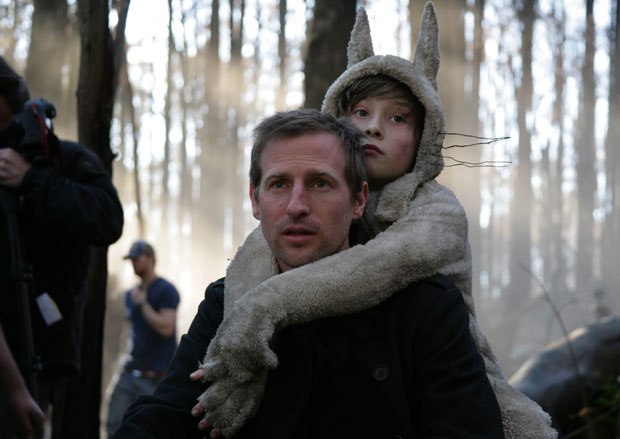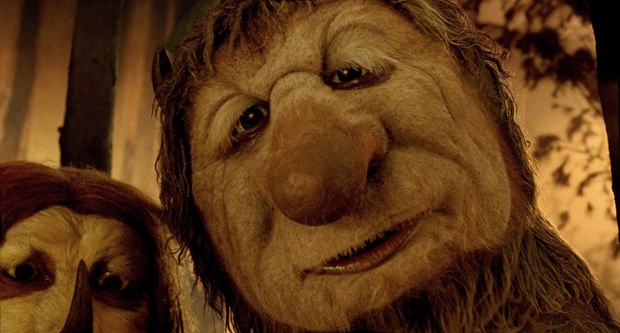The director of Where the Wild Things Are tells us the secret to his animated success.
Check out the trailer, clips and featurette from Where the Wild Things Areat AWNtv!
It's ironic that Spike Jonze left one technically challenging fable (The Curious Case of Benjamin Button) for another: Where the Wild Things Are (opening Oct. 16 from Warner Bros.). Both rely heavily on cutting edge facial animation to convey believable and memorable emotions. But after nearly a decade trying to figure out the best cinematic approach to bringing Maurice Sendak's classic children's picture book to the big screen, Jonze has succeeded in melding his vision with Sendak's. Off-beat yet organic, Jonze has fashioned a true hybrid in depicting childhood anger run amok. He resisted directing Where the Wild Things Are until realizing that the key was focusing on the wild emotions of the Wild Things that young Max encounters after running away from home. He tells VFXWorld how he came to rely on Framestore for animation and visual effects.
Bill Desowitz: Why did you choose Framestore?
Spike Jonze: We initially worked with different companies that did R&D [including Rising Sun and Animal Logic], and, as we were editing, we were still doing R&D as to how exactly we were going to do the visual effects and complete the characters' faces. Daniel Jeannette [the animation/visual effects supervisor] and Chris deFaria [EVP, digital production, animation and visual effects, Warner Bros. Pictures] were looking at different houses and different things. And we were trying something really ambitious. The company that could handle all of the work, which was 1,100 shots, and handle the quality of the visual effects and animation that we were looking for [was Framestore]. And what we were looking for were these very nuanced performances [from the likes of James Gandolfini, Catherine O'Hara, Forest Whitaker, Chris Cooper and Lauren Ambrose].
BD: And, that's what you got, which fit the look and tone you were obviously after.
SJ: And a lot of times in animation and puppetry, things are broad. Done well, like at Pixar, they're funny and charming and specific and nuanced. But it's a different type of performance than what we were looking for.
BD: Or, what David Fincher achieved with Benjamin Button.
SJ: I was amazed at that.
BD: It's interesting that you turned down Benjamin Button and yet Wild Things also relies heavily on facial animation.
SJ:
Yeah, but I didn't turn down Benjamin Button for technical reasons; I turned it down because it was at a studio at the time that I didn't trust that we were in synch: I didn't think we were making the same movie. But by the time Fincher took it on, it was a different studio, a different run Paramount. So, the animators at Framestore are real, real actors in the best sense. They were just wrapping up [Tale of Despereaux] as we moved in there, and it was a process that I had dabbled in here and there, but nothing to this degree. And working with them -- Michael Eames is the animation director at Framestore -- and he comes from real character animation. It was a visual effects movie, but it's funny because we never looked at it as a visual effects movie. Maybe when we prepped it, we did. But when we shot it, we looked at it as a character movie and even when we worked on the visual effects we still looked at it as a character movie. And sometimes I think a movie can get hijacked by it being a visual effects movie and it can suck some of the life out of it.
BD: Less so, these day. Many more directors want it to be more naturalistic and the technology can supply that. Chris Nolan is a great example.
SJ: Yeah, that's true. But it probably takes someone like Christopher Nolan to protect it and have confidence in it. Also, visual effects people have changed a lot. I remember 10 years ago, people had a lot more of a "this is how it's done" attitude, and you were going to their realm. A machismo about their territory. And nowadays I don't meet people like that in the visual effects world anymore. They're so much more interested in finding out what you as a director are trying to do and to serve that. And maybe it's that technology's changing: technology was a lot more restrictive 10 years ago. People aren't afraid of hand-held anymore: they're not afraid of a lot of things; the tracking software is so incredible. You can track in color correction now and it's getting much closer to compositing. All the tools available now are so helpful.
BD: Is it true that David Fincher convinced you to go down this path?
SJ: Yeah, yeah. We were prepping this as he was prepping Benjamin Button. And there was a point where we were between studios and so he gave us office space upstairs when we were homeless for a bit. So we were storyboarding and he showed us tests of Benjamin Button and that definitely gave me a lot of faith in doing the faces and the visual effects.
BD: What surprised you most when you first saw the animation?
SJ: In a way, and maybe all visual effects movies are like this, it was kind of an experimental film and we actually didn't know it was going to work until almost at the end. It didn't surprise me because it's what I always wanted. But I was hugely excited when I started to see the shots coming through where you'd see Carol's face and there was so much soul and feeling -- the performance was so… One of the first scenes of animation that came through that was exciting was actually when they're walking in the desert and Max says, "The sun's going to die," and Carol looks up and has a bothered look on his face. And his mouth opens and in profile you can see into his mouth. And you see his tongue and you see his teeth and even though they're five or six stops underexposed because they're in shadow, there's wetness to the eyes, the way the fur folds, his brow wrinkles. The characters were done in three totally disparate processes: voice shoot, costume performances and the facial performances. And I thought, "Wow! That's the completion of the illusion!"
Bill Desowitz is senior editor of AWN and VFXWorld.









